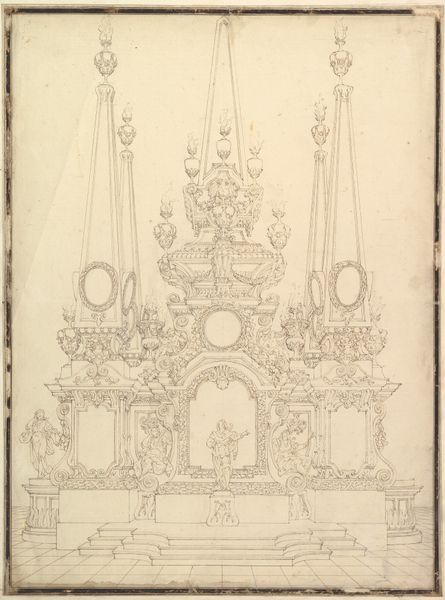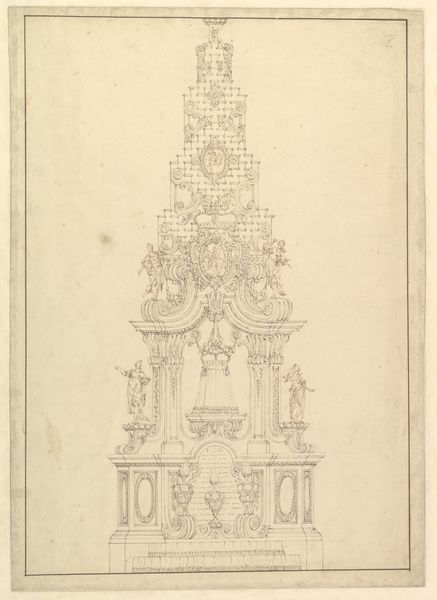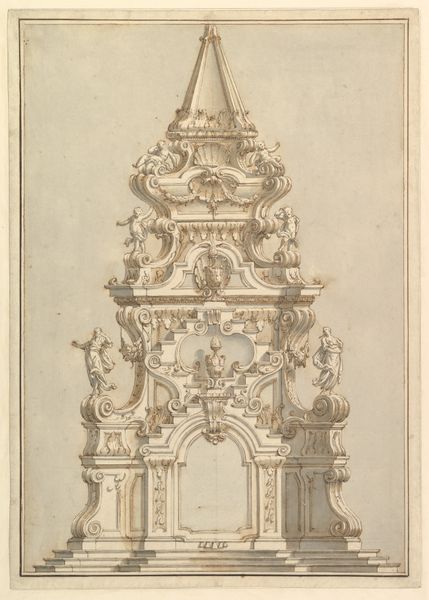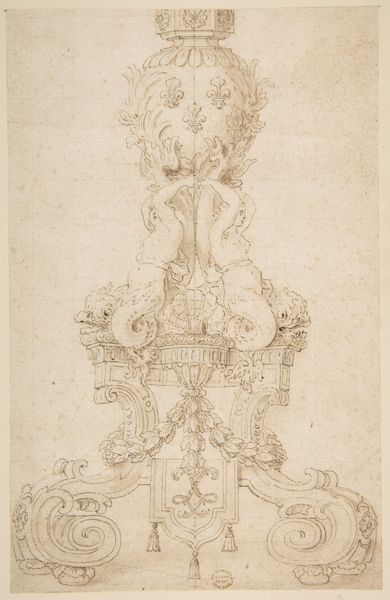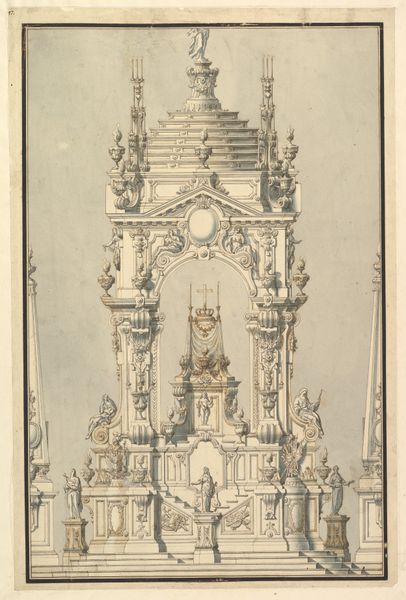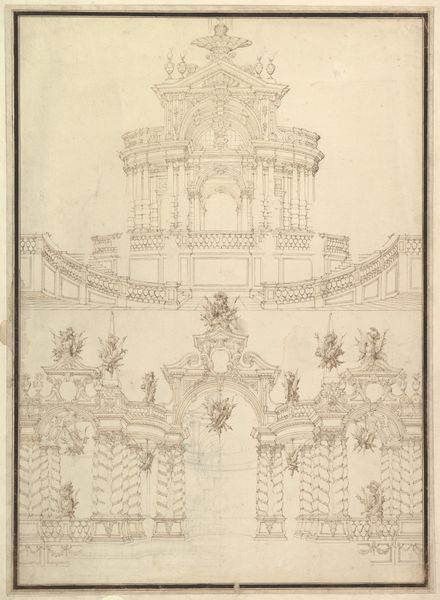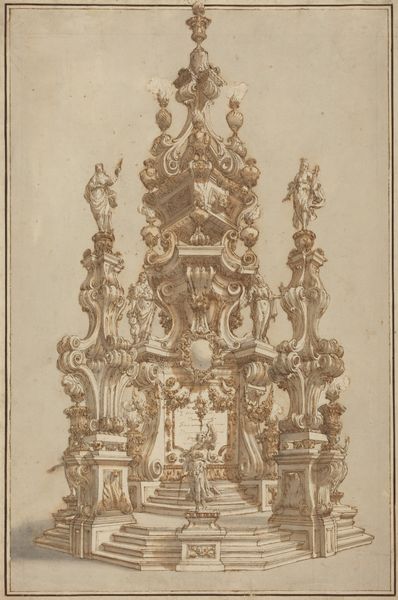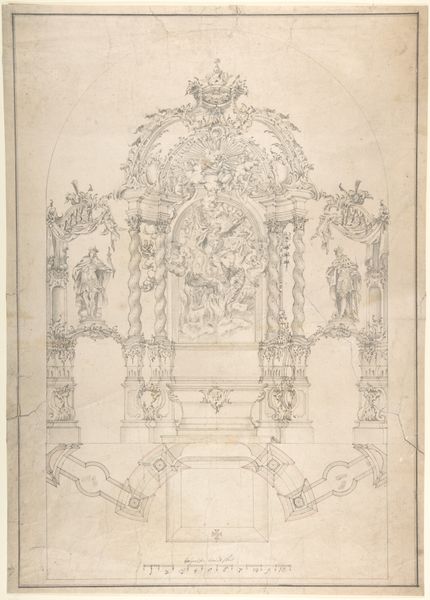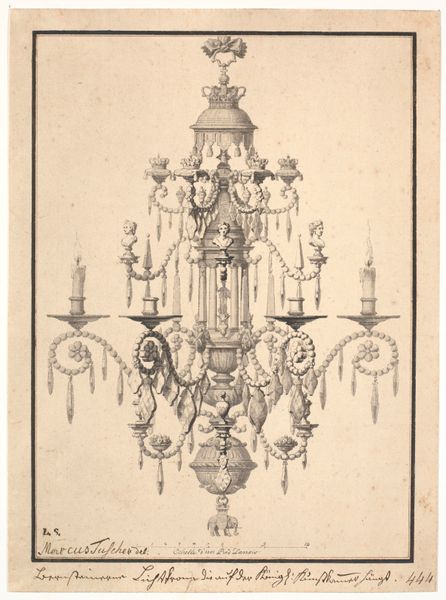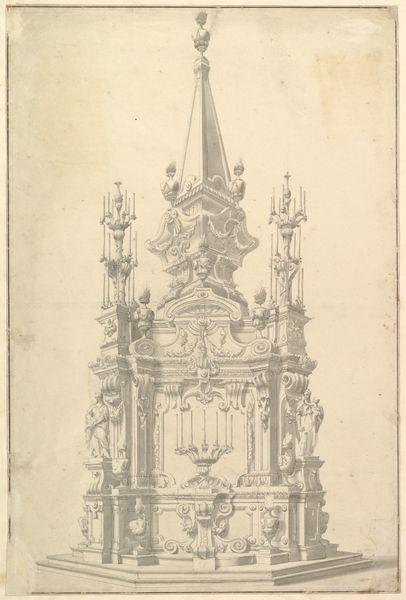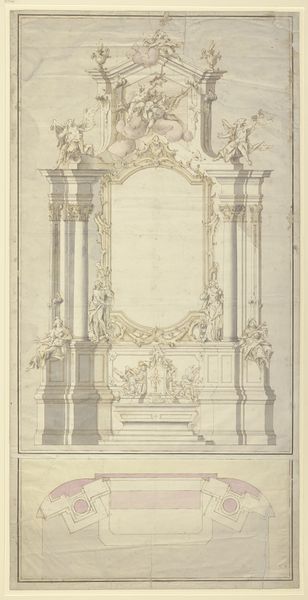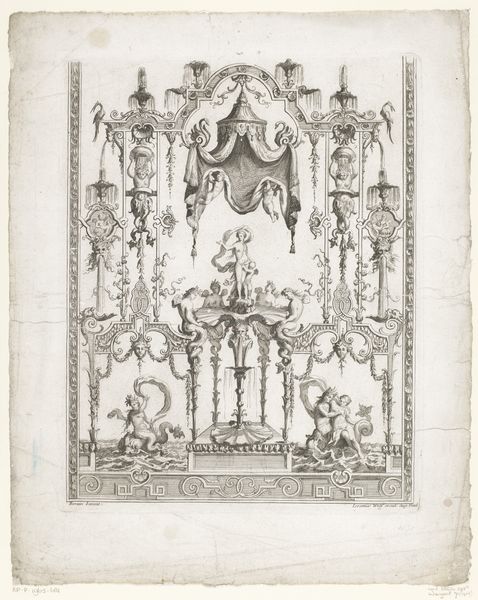
Elevation of a Catafalque: Two Pedestals with Candelabra at Sides; with Central Obelisk Surrounded by Candelabra. Verso: Sketch of architecture: archway and corner with pillars. 1696 - 1756
0:00
0:00
drawing, print, etching, architecture
#
drawing
#
baroque
# print
#
etching
#
etching
#
architecture
Dimensions: 22-3/4 x 17-1/8 in. (57.8 x 43.5 cm)
Copyright: Public Domain
Curator: Let’s consider this etching and drawing by Giuseppe Galli Bibiena, dating roughly from 1696 to 1756. It's titled "Elevation of a Catafalque: Two Pedestals with Candelabra at Sides; with Central Obelisk Surrounded by Candelabra". Editor: What strikes me immediately is the intense detail. It feels almost theatrical, or like a stage set. You can almost hear the echo of footsteps. Curator: Absolutely. Bibiena was, after all, a famed stage designer. And looking closer at the production of such ephemeral constructions offers insight into the culture that commissioned them. Think of the skilled labor needed to realize these intricate designs, the sheer material expense of wax for those many candles. Editor: It's intriguing how something so overtly focused on death, a catafalque after all is a temporary structure erected to honor the dead, becomes such a powerful display of wealth and artistic prowess. Curator: Indeed. The etching itself is a portable commodity, allowing these extravagant displays of power and grief to be disseminated widely. Notice how the crisp lines of the printmaking medium highlight the elaborate decorations and the architect’s deft hand. Editor: And the architecture depicted is fascinating! A fusion of classical and overtly baroque elements, typical of its time. The use of perspective tricks the eye and adds to its almost hallucinatory quality. Curator: Perspective isn't accidental here: it communicates a controlled message. Public grief, and the performance thereof, became critical mechanisms in shaping power in the baroque era. Etchings and engravings helped circulate acceptable models of mourning, piety, and order. Editor: So, what seems like an elaborate design becomes a carefully orchestrated socio-political statement, produced and reproduced, on display, then stored away. A commentary on power, loss, and artistic labor frozen in ink. Curator: Precisely. And the skill evident here, even in its initial planning stages. Considering all aspects surrounding ephemeral works like these helps bridge any artificial boundaries between "high" and "low" forms of craft. Editor: Looking again, I see the underlying themes of death and societal hierarchy intermingle, thanks to his deliberate crafting and masterful command of line.
Comments
No comments
Be the first to comment and join the conversation on the ultimate creative platform.
